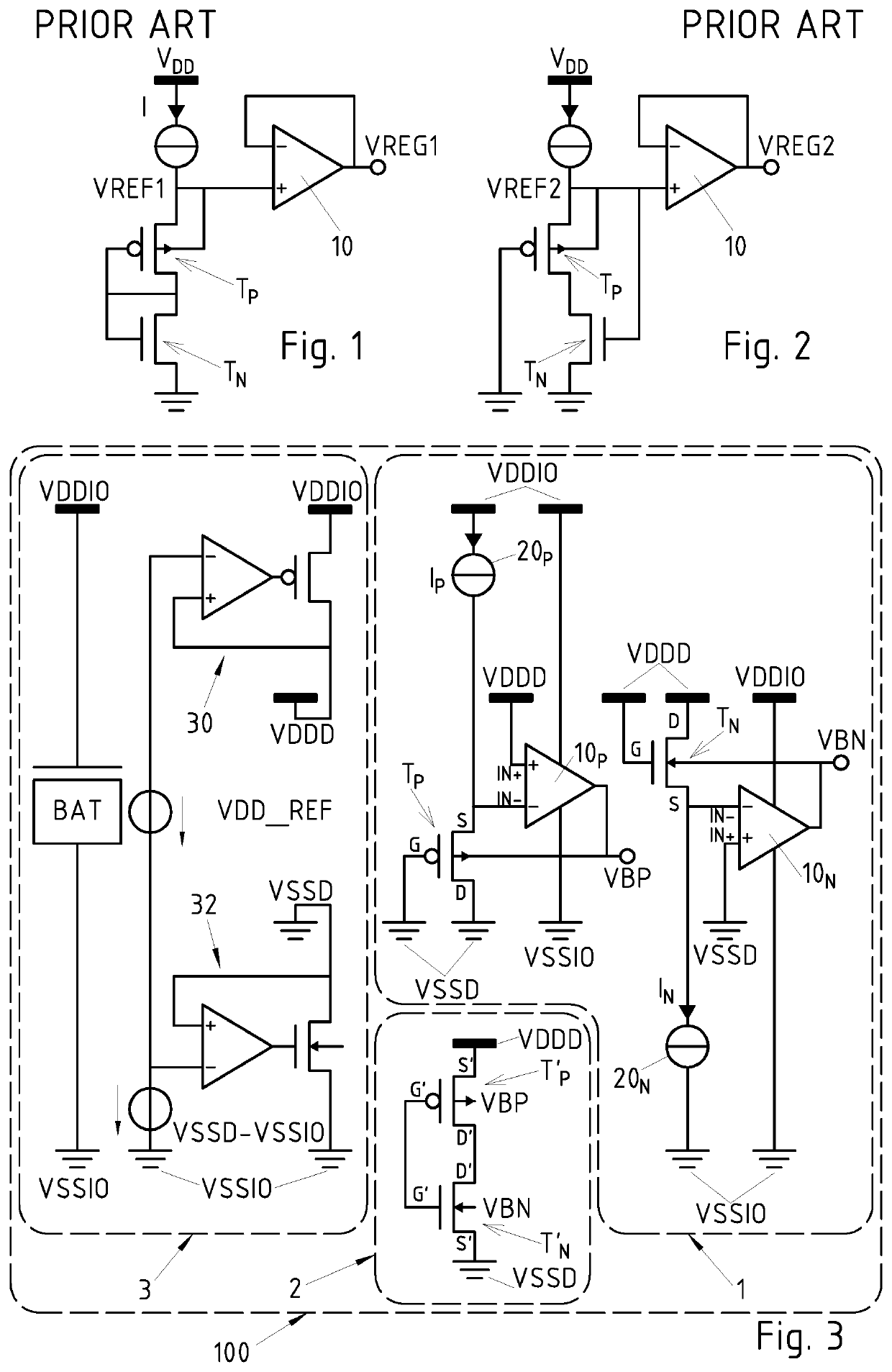Compensation device for compensating PVT variations of an analog and/or digital circuit
a compensation device and analog and/or digital circuit technology, applied in logic circuits, pulse techniques, reliability increasing modifications, etc., can solve the problems of large variability of reference voltage vrefb>1/b> over pvt variations, less attractive and easy to implement, and less energy between vsub>dd/sub>and vregb>1/b> headroom is merely dispersed
- Summary
- Abstract
- Description
- Claims
- Application Information
AI Technical Summary
Benefits of technology
Problems solved by technology
Method used
Image
Examples
Embodiment Construction
lass="d_n">[0096]FIG. 3 shows a schematic view of the electronic device 100 according to an embodiment of the invention. In the illustrated embodiment it comprises:[0097]a compensation device 1, for compensating PVT variations of an analog and / or digital circuit 2,[0098]the analog and / or digital circuit 2,[0099]an input / output circuit 3.
[0100]Examples of analog and / or digital circuits 2 to be compensated comprise, but are not limited to, voltage or current references, amplifier, oscillator, memory cells (e.g. SRAM or ROM cells), digital accelerators, processors, etc.
[0101]In the illustrated embodiment the input / output circuit 3 comprising a battery BAT, arranged for generating a voltage equal to VDDIO−VSSIO, and means 30, 32 (two LDOs in this case) arranged for generating the voltages of supply source VDDD and of the supply source VSSD of the compensation device 1 and of the analog and / or digital circuit 2. However it must be understood that other means, as DCDC converters, can be u...
PUM
 Login to View More
Login to View More Abstract
Description
Claims
Application Information
 Login to View More
Login to View More - R&D
- Intellectual Property
- Life Sciences
- Materials
- Tech Scout
- Unparalleled Data Quality
- Higher Quality Content
- 60% Fewer Hallucinations
Browse by: Latest US Patents, China's latest patents, Technical Efficacy Thesaurus, Application Domain, Technology Topic, Popular Technical Reports.
© 2025 PatSnap. All rights reserved.Legal|Privacy policy|Modern Slavery Act Transparency Statement|Sitemap|About US| Contact US: help@patsnap.com



